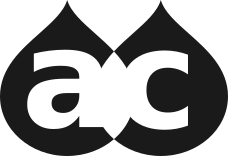In my previous post, "Building the Bridge: How Drupal CMS and IXP Could Empower Digital Agencies", I explored how Drupal CMS could help bring back smaller projects to the community. I discussed how this initiative, combined with IXP (inexperienced developer initiative), creates opportunities for agencies at every stage of development and offers a path to sustainable growth beyond what closed platforms can provide.
Today, I want to expand on this discussion by introducing a concept I've been developing to visualize Drupal's ecosystem: the pyramid model. This is a framework I've found useful for thinking about long-term sustainability in open source projects like Drupal.
The Ecosystem Pyramid
Over my years working in the Drupal ecosystem, I've come to visualize its sustainability as a four-level pyramid structure. This isn't an official model, but rather a mental framework I've developed to understand the dynamics at play.
At the base of this pyramid, we find hobbyists, personal sites, and small businesses that would otherwise use platforms like Wix. Moving up a level, we encounter growing small business implementations and more complex small projects. The third level encompasses medium-sized projects and agencies, while the top tier consists of enterprise implementations with complex requirements and larger budgets.
This structure isn't just theoretical—it's vital for sustained growth. The broad base creates entry points for new developers and users while generating widespread adoption and brand recognition. It establishes natural growth pathways as projects evolve, cultivates innovation through diverse use cases, and provides a talent pipeline for the entire ecosystem.
When this pyramid is balanced, the ecosystem thrives. New users and developers enter at the base level, projects grow in complexity and move up through each level of the pyramid, and talent develops alongside these evolving needs. The entire structure becomes self-reinforcing, with each level feeding into the next.
How Drupal's Pyramid Narrowed
The significant turning point in Drupal's evolution came with the shift from Drupal 7 to Drupal 8, which introduced more advanced code practices and architectural requirements. This modernization brought powerful capabilities to enterprise users but simultaneously raised barriers for newcomers. As we continued to evolve through versions 9 and 10, the pyramid shrank even more, with fewer newcomers entering the ecosystem and the base continuing to narrow.
The consequences have been revealing. The growing complexity led to increasing specialization among Drupal developers, while the pool of junior developers shrank as entry points diminished. Smaller projects became harder to justify due to the expertise required, and the total cost of implementing even basic Drupal sites increased. Meanwhile, alternative solutions like Wix and Squarespace captured the entry-level market.
This shift didn't just affect beginners—it impacted the entire ecosystem. With fewer entry-level opportunities, senior developers (who command higher rates) began handling tasks that junior developers could manage. Clients struggled to understand why they were paying premium rates for seemingly routine updates. The disconnect hurt Drupal's market appeal, even at the enterprise level.
What we've experienced is a top-heavy pyramid—strong at the enterprise level but with an increasingly narrow base. This imbalance threatens long-term sustainability because it limits the influx of new talent, reduces community diversity, and creates fewer pathways for growth.
Learning from Other Models: WordPress and Regional Perspectives
While my pyramid model is based on my own observations of the Drupal ecosystem, looking at WordPress provides an interesting comparison that seems to validate this perspective. WordPress powers approximately 40% of all websites because it successfully cultivates an ecosystem that spans from individual bloggers to large enterprises. Its plugin and theme marketplace creates opportunities at every scale of business—from hobbyists spinning up simple sites to product developers selling commercial extensions to enterprises deploying large-scale solutions.
The business model is fundamentally different. WordPress established a marketplace where even solo developers can build plugins used by millions and generate sustainable income. This marketplace supports different scales of business simultaneously, from thousands of freelancers and small agencies delivering websites for small clients, to medium-sized agencies and product companies specializing in WordPress solutions, all the way to enterprise-level implementations supported by large digital agencies.
WordPress's ecosystem exemplifies continuity from smallest to largest scale, making it highly sustainable. Projects can start small and grow without platform migration, while developers can gradually expand their expertise within the same ecosystem.
It's not just about platform differences—regional perspectives matter too. What constitutes a "small," "medium," or "large" project varies significantly by region. In North America, a small project might have a $5,000-$50,000 budget, while in Latin America and similar regions, that same budget range might represent a large project. The entire pyramid is scaled differently, with "enterprise" in some regions resembling "medium" projects in others.
Developer rates reflect this reality too—rates in the US can be twice those in Latin America for comparable skill levels. This means the pyramid model looks dramatically different depending on where you are in the world.
These regional differences create both challenges and opportunities. In regions with smaller pyramids, Drupal's complexity becomes even more prohibitive for projects at every level, further constricting adoption. Yet these same regions often have burgeoning communities of developers who could strengthen the global Drupal ecosystem if entry barriers were lowered.
Rebuilding the Base: Drupal CMS and IXP
This is where initiatives like Drupal CMS (formerly Starshot) and the IXP Fellowship become crucial. They represent our opportunity to rebuild the base of the pyramid.
Drupal CMS aims to dramatically improve Drupal's out-of-the-box experience by pre-packaging common features and best-practice configurations. It's designed to make Drupal much more user-friendly for newcomers while retaining the powerful framework capabilities that advanced users need. The initiative focuses on creating a more accessible entry point to Drupal without sacrificing the platform's power and flexibility.
The IXP Initiative complements this by incentivizing companies to onboard and mentor new Drupal developers. At the heart of IXP is regionalization—the goal is to see companies in Colombia hiring Colombians for local market projects, companies in Brazil hiring Brazilians, and so on across every region. This localized approach recognizes that each region has its own pyramid with different scales and needs.
Together, these initiatives can restore the pyramid's balance. Drupal CMS lowers the entry barrier for both users and developers, while IXP creates pathways for newcomers to gain experience and expertise. The combination enables agencies to take on projects of all sizes, and the same platform can support growth from simple sites to complex solutions.
This strategy offers several advantages: small projects become viable again on Drupal, expanding the base; sites can grow in complexity without platform migration; agencies can diversify their project portfolio for greater stability; and the talent pipeline is replenished with new developers.
Growing the Middle Layers: The Next Challenge
As we rebuild the base of our pyramid, we must also consider how to strengthen its middle layers. The small business and medium-sized project tiers serve as critical bridges between hobbyist implementations and enterprise solutions. Each level must be healthy for the whole ecosystem to thrive.
For these middle layers to thrive, we need to focus on several key areas. First, we need to provide clear growth paths for sites that start simple. How do we create natural stepping stones that allow small Drupal CMS sites to evolve into more complex implementations? This requires not just technical solutions but also educational resources that help site owners understand when and how to expand their capabilities.
Second, we need to support agencies that serve the small and medium markets. These agencies often face unique challenges—they need more sophistication than basic site builders but lack the resources of large enterprise firms. How do we ensure they have the tools, training, and community support to succeed at each level of complexity?
Third, we need to create economic incentives across the spectrum. WordPress's success is partly due to its diverse economic opportunities at all levels. Can we foster similar opportunities in the Drupal ecosystem, perhaps through marketplace models or service networks?
Finally, we need to build regional support systems. Given the significant regional variations in project scales and economics, how do we tailor our approach to strengthen Drupal communities in different parts of the world?
The answers to these questions will shape the future of Drupal's ecosystem. By rebuilding our base and strengthening our middle, we can create a self-sustaining pyramid that supports growth at all levels.
Looking Forward
Drupal's evolution toward greater accessibility represents not just a technical transformation but a community one. The initiatives we've discussed—Drupal CMS and IXP—are foundational steps toward rebuilding our ecosystem pyramid.
The work ahead won't be simple. It requires balancing technical accessibility with Drupal's powerful capabilities. It means supporting diverse business models across the community. And it demands that we think globally, recognizing how different regions experience the Drupal ecosystem.
Yet the potential rewards are substantial: a more diverse community, a larger talent pool, increased market share, and a truly sustainable ecosystem that can continue innovating for decades to come.
As we move forward with these initiatives, I'm hopeful that we're seeing the beginning of a renaissance in Drupal's accessibility and adoption. By rebuilding our pyramid from the foundation up, we can ensure that Drupal remains not just technically excellent but accessible and sustainable for users and developers across the entire spectrum.
What do you think about this approach to ecosystem sustainability? How are you experiencing the Drupal ecosystem in your region? I'd love to hear your perspectives in the comments below.


Comments for article
Great
Thanks
This is a great mental framework; it makes super-easy to think about the current situation, as well as how to focus community effort in order to grow both user and developer-base. Excellent post!
Thank you, please share!
Add new comment